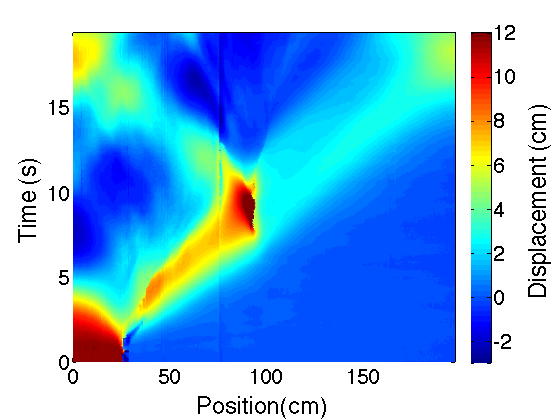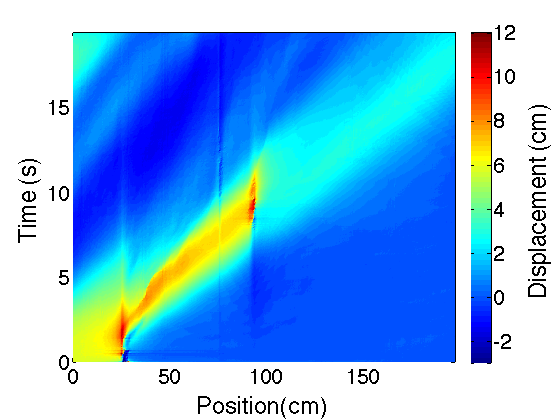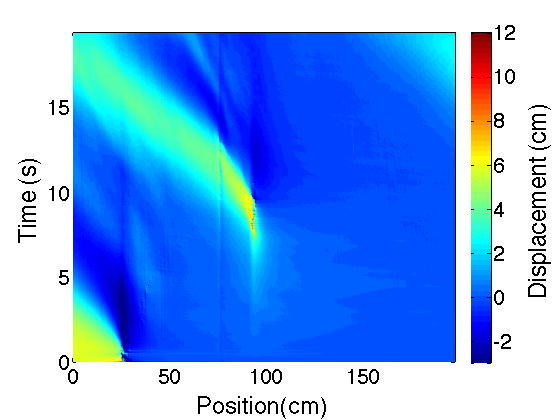
May - August 2013,
Department of Physics, University of Alberta

|
|
Experiments/Research performed by Scott Keating, Ishita Shrivastava, May - August 2013, Department of Physics, University of Alberta |
Solitary waves can be generated in the ocean at the interface between warm,light surface water, and the colder, denser water from the abyss when tidal forces pull the cold water from the deep ocean onto continental shelves. They can also be formed at river mouths where freshwater enters the ocean.
We investigated solitary waves in a two layer fluid as they reached a barrier, with the intent of finding what happens when a solitary wave reaches a region in which it cannot propagate, and in particular to characterize the proportion of wave energies transmitted and reflected. The energy of solitary waves can cause mixing and turbulence when the waves break, so this research is relevant to the management of coastal fisheries and the establishment of offshore oil platforms.
We used a rectangular Perspex tank with the following inside dimensions: 48.8cm high, 17.4cm wide and 197.3cm long. We filled the tank to a height H2 with a salt water mixture. A plastic barrier was then inserted. Thin vertical barriers, as well as different slopes of triangular barriers were used. A layer of freshwater of height H1 was added, with care taken to minimize mixing. A lock was then inserted to separate a length LL of tank, with a gap left below to allow free movement of the denser fluid. Additional freshwater, to a total height of HL was then added in the lock, resulting in differing heights of freshwater on either side. The lock was then extracted, launching a solitary wave. The important experimental parameters are shown below.
The experiment was recorded on camera, and the recording was used to determine the displacement of the interface as a function of time. Fourier transforms allowed for the leftward and rightward moving components of the wave, to better distinguish the energy associated with the transmitted and reflected waves. Analysis shows that the kinetic and available potential energies are roughly equal, so the reflection and transmission coefficients were determined using available potential energy.

|
| Video of solitary wave approaching barrier |
|---|

|
| Hw=37.4cm , H1=6.4cm , H2=31cm , HL= 18.4cm , HB=25cm |
| Displacement for entire wave | Rightward moving components | Leftward moving components |
|---|---|---|

|

|

|
The major factor in the determination of transmission and reflection is set by the wave forcing amplitude versus the depth of the lower layer fluid above the barrier, expressed through (HL-H1)/(H2-HB). An increased forcing amplitude or smaller gap above the barrier caused an increase in the reflection, and decrease in transmission. In general, the experiments with greater slope had greater transmission and less reflection. In addition, the experiments with sloped barriers had an increased dependence on H1, with larger H1 increasing transmission.
| Transmission, Reflection for Thin Barrier | Transmission, Reflection for Short Triangular Barrier | Transmission, Reflection for Long Triangular Barrier |
|---|---|---|

|

|

|